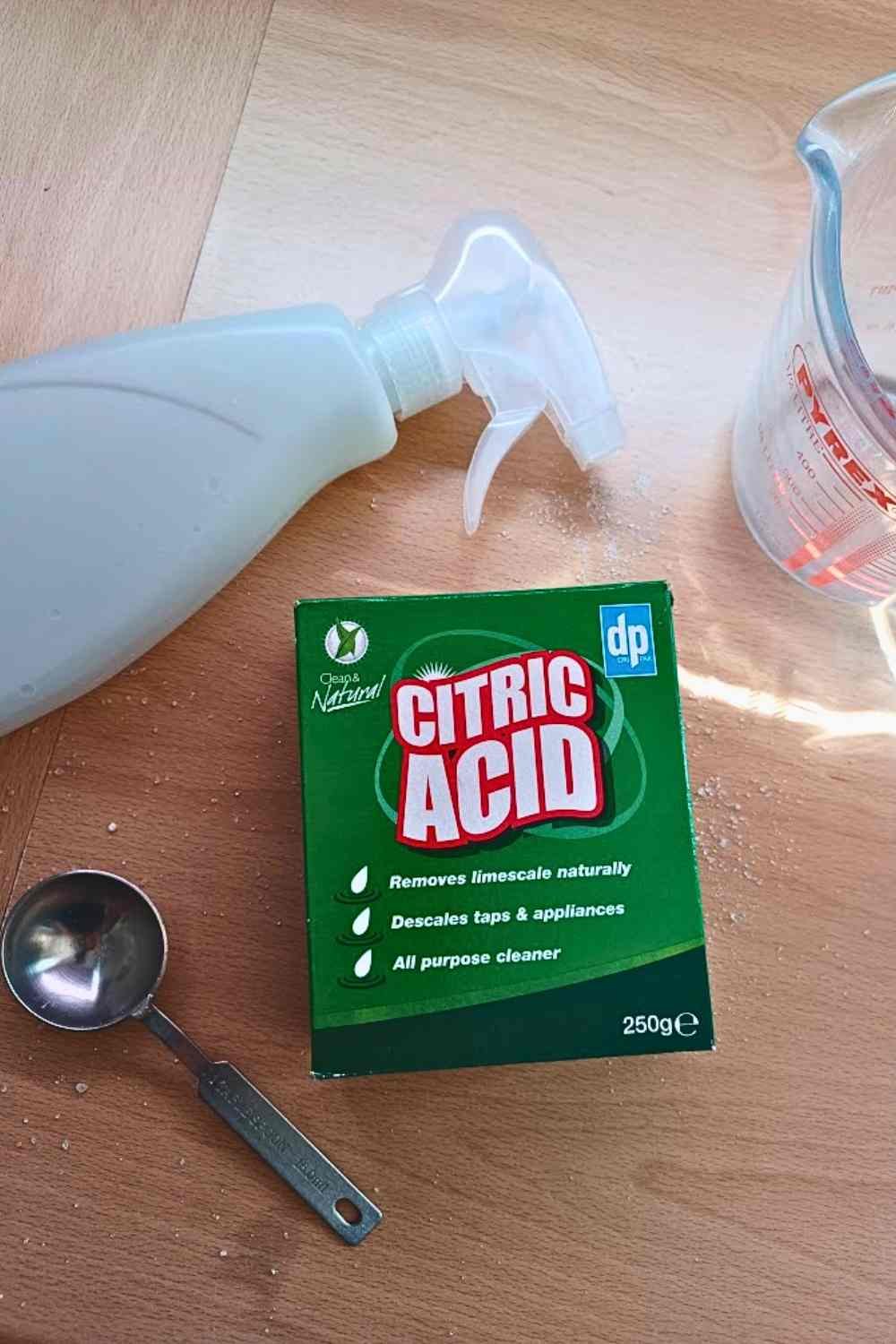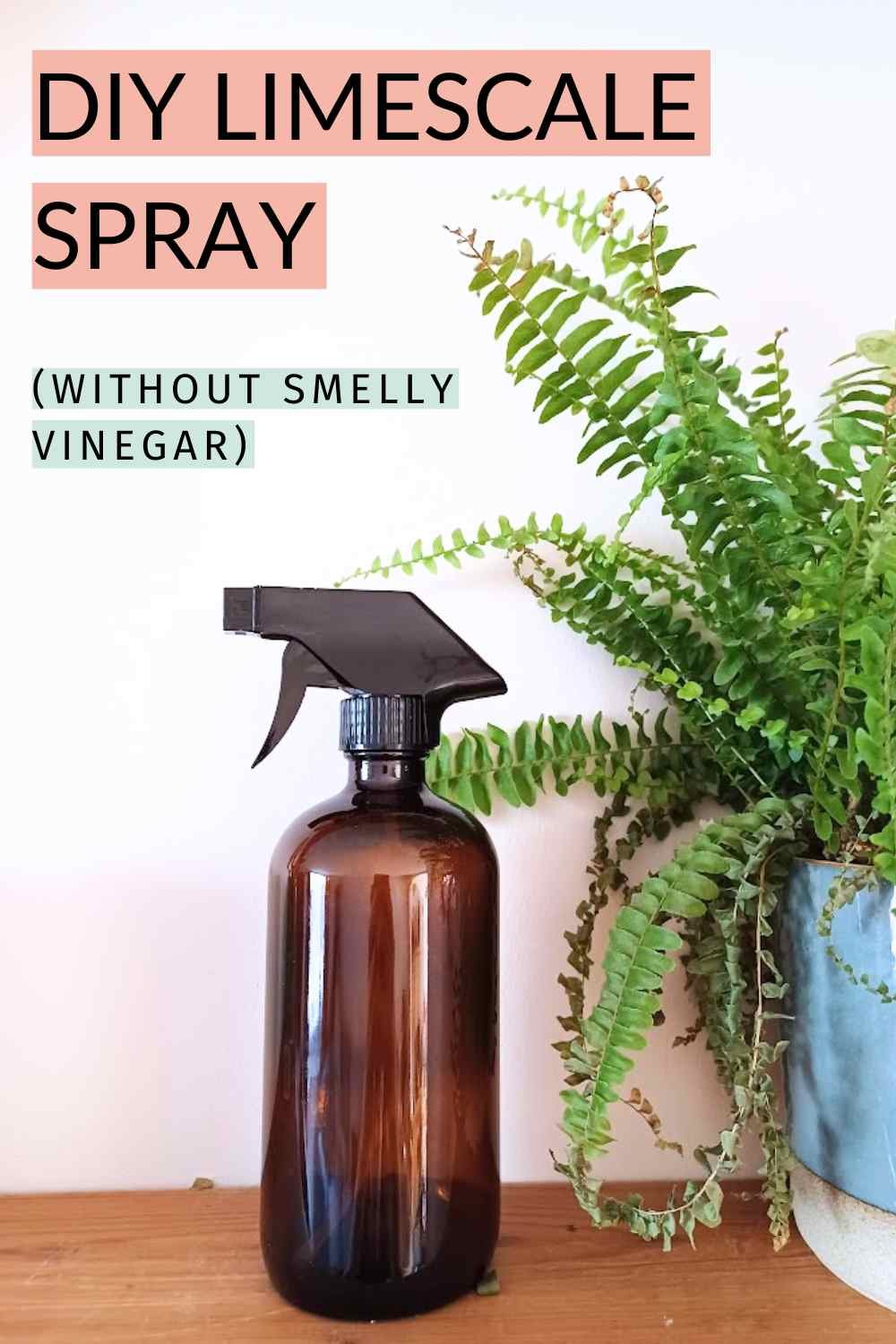DIY Citric Acid Spray For Limescale + Soap Scum
Want to make a DIY non-toxic limescale spray for your home without toxic chemicals or smelly vinegar?
This site is reader-supported and contains affiliate links at no cost to you.
Did you know that the average family of four can create 70kg of limescale a year?
Everyone hates the sight of this chalky residue, but how do you get rid of it without a commercial product full of toxic ingredients?
The solution is a simple one - you can make your own at home!
The DIY limescale cleaner I’m about to share with you is:
Non-toxic
Quick to make
Cost-effective
Don’t forget to scroll to the end for a free printable so you can make this recipe again and again.
COMING UP
How to make a DIY non-toxic limescale spray
Everything you need to know about citric acid
- What is citric acid?
- What is citric acid used for?
- Where you can buy citric acid
- What is limescale
- How does citric acid remove limescale?
- Why isn’t my limescale spray working?
- Five Benefits of citric acid over white vinegarFree cleaning spray printables
Warning: never mix citric acid with bleach. avoid spraying citric acid on natural stone or marble.
How to make a DIY Citric acid Limescale Spray
To make a citric acid spray you should use 1 tablespoon of citric acid per cup of water (250ml). You can adjust this recipe depending on the size of your bottle, e.g. if your bottle is 750ml you would use 3 tablespoons of citric acid.
INGREDIENTS
500ml boiled water
2 tbsp of citric acid - see below for where to buy it
EQUIPMENT
A measuring jug
A tablespoon
A spray bottle - reuse an old plastic one, if you don’t have any, you can find glass bottles here.
METHOD
Pour 470ml of boiled water into a measuring jug
Add two tbsp of citric acid. Warm water will help it dissolve
Wait for the water to cool down
Tip your cooled water and citric acid solution into your empty spray bottle.
That’s it! Isn’t it simple? If you’d like a printable sheet, scroll down to the bottom of this blog post.
2. Everything you need to know about citric acid
What is citric acid?
Citric acid is an acid compound that comes in the form of a white powder similar to salt. It is naturally found in citrus fruits, but it can also be derived from the fermentation of sugars using Aspergillus niger spores.
What is citric acid mainly used for?
Citric acid is effective for removing:
Limescale
Soap scum
Hard water stains
Rust
Tea + coffee stains
One of the most common uses for citric acid in homes with hard water is descaling appliances.
Citric acid is a reducing agent. This means it can actually denature (change the nature of) proteins, such as proteins that make viruses function. For this reason, it can be used as a kitchen disinfectant, too.
It is antibacterial, antimicrobial, and safe to use around children and pets.
Citric acid is also a preservative, which means it prevents the formation of bacteria, mould, yeast, and fungus. It is one of the most popular food additives, but not all citric acid is food-grade.
Where to buy citric acid?
In the UK:
Budget option: Dri Pak citric acid
Food-grade option: Ecoliving (you can also buy glass spray bottles here)
Food grade option: Ecoliving - discount code ANDKEEP5
In the USA:
What is limescale?
If you have hard water, you’ll be familiar with limescale.
Limescale is a chalky substance that is made from the minerals, calcium and magnesium, in your water. When hard water evaporates, the substance is left behind.
Over time, limescale builds up in your appliances and areas of your home that frequently come into contact with heated hard water. It can also cause problems where hard water stays for long periods of time, like in the toilet.
Using citric acid is an effective and affordable way to prevent limescale from ruining your appliances. You can use it inside washing machines, in your toilet, and spray it on taps and shower walls as a preventative measure.
Read next: how to remove limescale from your toilet with citric acid
How does citric acid remove limescale?
Limescale is alkaline, which means it can be dissolved by an acid, such as citric acid, lemon juice, or vinegar.
Why isn’t my limescale spray working?
If your limescale has built up it can become stubborn to remove. The easiest solution is to combine citric acid with hot water and leave it to soak. If it’s particularly bad, it may need more than one attempt.
Once you’ve removed the build-up of limescale, using your DIY citric acid spray regularly on affected areas will prevent the limescale from getting bad again.
Five Benefits of citric acid
Unlike, vinegar, citric acid is a “reducing agent.” This means it can actually denature (change the nature of) proteins, such as proteins that make viruses function. For this reason, it can be used as a kitchen disinfectant, too.
Vinegar is 90-95% water which contributes to its carbon footprint. Due to its smaller size and weight, citric acid has a lower carbon footprint.
Studies by the chemist, Dr Fabrizio Zago's, found that vinegar is more aggressive and corrosive than citric acid when it comes into contact with nickel and other metals. Therefore, it is more beneficial to descale your washing machine with citric acid.
Citric acid comes in cardboard packaging which can be recycled in everybody’s kerbside bin in the UK.
Citric acid in the UK is very cheap. It is an extremely cost-effective way of making an eco-friendly cleaning spray.
6. FREE NATURAL CLEANING PRINTABLE
To make natural cleaning easier, I’ve made a selection of printables with instructions for my cleaning routines and how to make all my favourite DIY products.
(No email or sign-up required!)
You can either laminate them and stick them to the wall by your machine, or you could pop them into a cleaning folder. Whatever works for you!
You can find all my free cleaning printables here (please note that I’ve made 2 for this product in case you have a larger spray bottle!)
If you make this product, let me know, I’d love to hear your feedback. For more content on green cleaning, check out the cleaning category on my blog.
If you’ve found my blog helpful, you can say thanks by buying me a coffee here.





